 |
Buckland's Third Revolution Poster 1st Column |
 |
(Threesology Research Journal)
http://threesology.org
| BTR column 1 | BTR column 2 | BTR column 3 | BTR column 4 | BTR column 5 | BTR column 6 | BTR column 7 | BTR column 8 | Images of posters |
Poster viewers as of June 21st 2025
Note: While mostly intact as the information appears on the 1997/1998 copyrighted poster, I have taken some liberty in adding one or another example which came to mind while working on the re-posting. In some cases I have even added an internet link, though I didn't even use the internet at the time of compilation. All the items were hand written and then typed on an old upright typewriter from the 1940s/50s which I no longer have due to moving several times over the years. While some example I had collected years before, others occurred during the initial stages in preparation for the printing. The lack of space for printing the poster whose size was determined by the printer's resources, required that I exclude hundreds of examples. The examples from physiology were gathered long before I had encountered Dr. McNulty's list of threes in Anatomy. I sent him a copy of the poster to which he replied with a letter of acknowledgement. Many of the examples are from spending time perusing different books in different libraries while others are due to personal experiences, observations, kept journals and recalled colloquialisms from different environments. Granted some items are rater dated and others may no longer be accepted as fact, nonetheless at the time of compilation I attempted to be as honest as possible. I worked entirely alone on the project, and am thus responsible for any errors you might find, except those caused by the retyping at the printer's offices. The task was undertaken after I resigned from a job and couldn't find employment except as a temporary worker at multiple mindless tasks.
It is the third road we must now pioneer for the sake of ourselves, our children, our humanity. We must put Democracy, With its antiquated two-party system, out to pasture and adopt a thoroughbred three-party system so-named Cenocracy, which means New Government. (By the way, all horses registered in the stud books throughout the world are said to have originated by sheer "coincidence" from three ancestors: Goldolphin Barb~ Byerly Turk~ Darley Arabian and that these three, by another sheer "coincidence" are survived in a direct line descendance by the 3 horses Matchem~ King Herod~ Eclipse.)
A 3-party system is a superior form of social self-governance because it is a successive state of progress similar to thousands of other 3-patterned sequences occurring in life. Therefore, We The People, having endured the first two successive stages of self-governing trials, tribulations, and temerity (one-party "Unicameral" systems and two-party "Bicameral" systems), now elect to journey the virgin path of a three-party "Tricameral" system so that we may once again pace the footsteps of time's stride in rhythm with nature's three-verse song. It is a tune not unlike that of the Pied Piper's three notes. Three trails lay before us: Anarchy~ Barratry~ Concinnity
with an arrow pointing you in the right direction:
Once, twice, thrice upon a time...
(I will try to keep this short and on an elementary level):
3 1/2 to 4 billion years ago, the building blocks of life were subjected to an Earth that was spinning much faster than it is today. Instead of our present 24 hour day - (depending on what mathematical model you use), the early Earth had a daily rate somewhere in the range of from a few seconds to about an hour or so.
- Quite obviously the young elements of life couldn't get it together at first because they were holding on for dear life (and getting dizzy) on this fast spinning merry-go-round. The Earth was spinning so fast, these elements saw/felt nothing but the Sun day in and day out for years and years and years.
- It was not until sometime later that these elements began getting a chance to get out of the Sun (and relax their white-knuckle grip) when the Earth had slowed down enough whereby a period of nighttime was created. No doubt some of the elements and those that hung out with them, began to prefer the night life on the town in the primordial soup and elsewhere, while others continued to wake up with the birds (so to speak), as they had always done merely out of habit.
- Further slowing of the Earth made the Sun's three "moments", Dawn~ Noon~ Dusk, produce a disco-like 3-patterned strobe light effect.
You should have been there. Some elements, metaphorically speaking, were dressed to kill, others were dressed to the "nines" and still others were streaking about the place. To watch them, one might think they had a blind date with destiny or something.
The building blocks of life had endured a 1-patterned total irradiation of the Sun that changed to a 2-patterned night/day sequence, which was followed by a 3-patterned Circadian-rhythm-producing strobe light effect. And along with this, because of the fast spinning Earth, as well as the very naive perception of the world that these young elements had, the ascent and descent of the Sun displayed a triangular pattern and not a circular one as we (with our current level/type of consciousness) perceive today. No less, as the Earth continues to slow down and the Sun continues to enlarge as it decays, the Sun's 3 "moments" are slowly "fusing" together thereby creating a 3 to 1 scenario.
We humans, as an Earth-borne complex biological organism, symbolically express the impressions created by the 1~ 2~ 3 sequence, triangular pattern and fusion images that were and are repeated to us like a non-stop record whose lyrics, melody and/or rhythm may be, metaphorically speaking, sung, hummed, whistled, tapped, danced, or stay perpetually on one's mind because they were absorbed by our basic biological development which affects our physiological development which in turn affects us psychologically. In short, all life forms, in their own way, will exhibit these images with respect to how, when, and where such images became impressed upon them within the constraints of their physical form.
You might want to think of the Sun as a rancher's branding iron whose design(s) and subsequent mark/label/brand on the "hide" of a biological organism during different stages of its development, changed over time due to the sensitivity, impressionability and level of susceptibility of various life forms that were/are developing under various Earth terrains over millions of years. Another analogy is to recall the after-image of a television screen that is seen after watching TV for awhile and then turn it off in a dark room. A "flash bulb memory" with respect to the "Now Print!" theory might help some to appreciate the above idea if they will visualize the Sun as a flash-bulb which would be the case with an accelerated spinning Earth. A final example is to review the studies of imprinting and the associated idea of critical periods, but also to expand upon the idea of critical periods to include biological development as a whole, an entire species/race, as well as the customary notion of critical periods assigned to a single person/life form.
The present 2-part theory of biological development, "Ontogeny ("Embryologeny") recapitulates (Embryogenetic) - Phylogeny," is made more complete by evolving into a 3-part theory, "Embryologeny recapitulates Embryogenetic-Phylogeny recapitulates Geoheliogeny" (Earth/[Moon]/Sun Development).
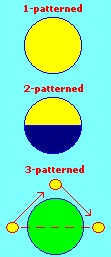
|
*** Examples of the triangular image:
- Pyramids
- Native American Tepees
- V-shaped engine blocks
- V-shaped formations of migrating birds
- Mounds of "higher" termites
- Fins of various aquatic life forms
- Ideas such as the Bermuda Triangle
- Polynesian Triangle
- Triangular Trade Routes
- Pyramid business schemes
- Food pyramid
- etc.;
As well as inverted Ant-lion burrows and various triangular-related words such as:
- cone
- tripod
- Christmas tree
- steeple pointed arch
- spear/arrow/axe head
- bill/beak
- conical
- wedge
- leaf
- crystal
- pen tip
- the x-chromosome as two triangles attached at the apex of each
- Cuneiform characters
- clothes hangers
- V-tapered torso
- lamp shades
- V-shaped foot stance of soldiers at "attention"
- paratrooper with open parachute
- chevron insignia
- flying stealth "wing"
- triangular after-image of overhead street lights (shut off by the photo-electric cell due to the approach of dawn)
- etc...
*** Examples of the 3/1 relation: Unified field theory of 3 fundamental forces as being 1 force; Three persons in 1 god (Christianity); Triple wedding ring on I finger, King Tut's coffin is 3 coffins in 1 with innermost as the largest solid gold object in existence; Three synoptic gospels and 1 idiosyncratic; Three (Red blood cells - White blood cells - Platelets) to 1 (Plasma); Musketeers: All (3) for 1 and 1 for all (3); etc...
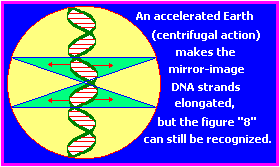
*** Examples of the figure "8"or "X" are: Our concept of infinity is a figure "8" laid on its side; Dance of honey bees; Dogs (and other animals) will perform a figure "8" with their head while holding an actual or symbolic prey (shoe, sock, glove, etc.,) in their mouth; Tips of bird and bat wings are said to display an oval or figure "8" path while in flight; Dmitri Mendeleev and John Newland's repetition of chemical properties in a cycle of 8 (lighter) elements; Hourglass; "Double-dutch" rope turning; Double helix, etc...
*** Note: Let us not overlookthe periodic reversals of the Earth's magnetic field polarity;
precession of the Earth's axis; as well as the accelerated passage of the Sun from Solstice through Equinox to Solstice, three
"moments" of 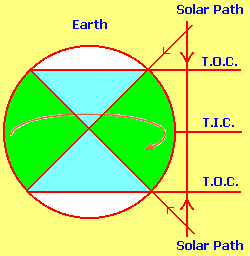 which I elaborate as
which I elaborate as
Tropic of Cancer (TOC) ~
Tropic Internal Center (TIC) ~
Tropic of Capricorn (TOC)
This TOC-TlC-TOC is quite readily viewed as a child's onomatopoeic expression of a pendulum-styled clock when the Sun-to-Earth relationship is visualized at an accelerated rate, with the Sun as the pendulum weight. (A large brass one always comes to mind.) Thus, I refer to this idea as the Tic-Toc theory. It entails the visualization of the Sun inscribing an X, or figure 8 on the surface/air/water and anything affected by solar irradiation effects.
3rd planet from the Sun: Earth
3 basic layers to Earth: Crust~ Mantle~ Core
***Earth's shape is a triaxial ellipsoid
333,000 times that of the Earth: The Sun's "approximate" Mass
3 degrees: Temperature of Outer Space (middle point between 2.5 to 3.5 range)
3 atmospheric gas content constants on Earth: 78% Nitrogen~ 21% Oxygen~ 1% all other gases
3 theories concerning form of Universe: Flat ~ Spherical ~ Saddle Shaped (Linear~ Circular~ Triangular)
3 phenomena of Big Bang theorists: Helium abundance~ Microwave background~ Hubble expansion
333 miles per hour: Earth's "approximate" rate of spin
3 variations to Earth's rotation:
Secular (Friction from Earth's tidal bulge) ~
Periodic (Seasonal changes & regular events) ~
Irregular (Turbulent core/mantle interactions)
3 (23.5°) measurements of Earth:
- The Earth's axis sweeps out a cone of 23.5° half angle in 26,000 years
- Summer solstice from equator
- Winter solstice from equator
***There are 3 families of fundamental particles
3 parts of an atom: Neutrons~ Protons~ Electrons
3 basic parts to fundamental parts of atoms: 3 Quarks and 3 Anti-Quarks
3 content percentages of Gunpowder: 75% Potassium nitrate~ 15% Charcoal~ 10% Sulfur
3 basic components to nitroglycerine: Glycerol~ Nitric acid~ Sulfuric acid
3-lettered explosive (TNT) Tri-nitrotoluene, is a standard by which all other explosives are measured for 1) cost, 2) transport, and 3) flexibility of use.
3 processes of nuclear energy: Fission ~ Fusion ~ Combination(?)
3 Big Bangs:
- The "original" Big Bang of the Universe
- Mammoth explosion of a nearby massive star
- 65 million year old "Dinosaur killer" rock that caused a nuclear winter
***Triple alpha process occurring in the interior of stars at 100 million degrees is responsible for the nuclear formation of carbon
3 classical origin of Moon hypothesis:
- Binary planet or "sister" hypothesis~
- Rotational fission or "daughter" hypothesis~
- Capture or "wife" hypothesis
3 major (Moon) rock types: Potassium-rich basalt~ Anorthosite~ An Iron, Titanium-rich basalt
3 Universe Cosmology of J.R. Gott III: Our Universe~ Antimatter Universe~ Tachyon Universe
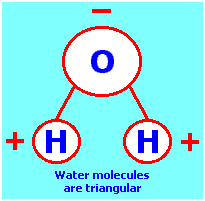 3 basic forms of Matter: Solids-Liquids-Gases
3 basic forms of Matter: Solids-Liquids-Gases3 basic Rock forms: Igneous~ Metamorphic~ Sedimentary
3 forms of Carbon: Diamonds~ Graphite~ Fullerene
3 forms of Atomic radiation: Alpha-Beta-Gamma
3 general laws of Thermodynamics
3 laws of Planetary Motion (Johannes Kepler)
3 laws of motion (Isaac Newton)
3 basic Hydrodynamic laws
3 Magnetism "laws": Opposites attract~ Likes repel~ Inverse square
3 basic materials used in magnets: Iron~ Cobalt~ Nickel
3 millimeters thick is considered a typical magnet by some standards
3 magnetic materials: Hard~ Soft~ Semi-hard (recording materials)
***Triplets are the most commonly found phosphorescing states
3 major wavelengths of sunlight: Visible~ Ultraviolet~ Infrared
3 ultraviolet radiation divisions:
- Near (4,000- 3,000 Å) ~
- Middle (3,000- 2,000 Å) ~
- Long (2,000- 100 Å)
3 fundamental forces of nature: Gravitational~ Nuclear~ Electromagnetic
3 "ideal gas" laws: Robert Boyle's~ J. Charles or J. Lussac's~ Avogadro's
(These 3 explain {in a 3 to 1 ratio way} how Pressure~ Temperature~ Volume + number of particles in a container of gas are related.)
|
RNA~ DNA~ Proteins RNA: --- Predominantly single stranded 3 main types: Messenger (mRNA)- Ribosomal (rRNA)- Transfer (tRNA) 3 triplets terminate protein synthesis: UAG- UAA- UGA 3-site tRNA model is well established, 2-site model is dead DNA --- Predominantly double-stranded (Double Helix) 3 polymerases (enzymes): DNA Polymerase I- II- III 3-patterned (triplet) codon system Proteins: --- Predominant triple conformation structure 3 single polypeptide forms: Primary~ Secondary~ Tertiary 3 secondary structure regions: Alpha helix~ Beta sheet~ Looped 3 tertiary structure domains: Alpha helix~ Beta sheet~ Combination of both (1 multiple polypeptide structure called Quaternary, is a composite) |
3-stranded Collagen is considered most abundant protein in our body (Triple Helix)
3 component nucleotide: Nitrogenous base~ Pentose sugar~ Phosphate group
***Tribonucleic acid (TNA), consisting of a hemiactal backbone of surface-anchored phosophotrioses, has been proposed as a hypothetical precursor to RNA and DNA, by G. Wachtershauser, 1988.
3 Billion base pairs: common reference to the human genome
***1 trillion~ More than a trillion~ 100 trillion: 3 common references to quantity of cells in the human body
3 cell membrane theories: (1st) Monolayer~ (2nd) Bi-lipid layer~ (3rd) Trilaminar
***Stanley Miller's 3 (gases) to 1 (water) ratio for Chemical Evolution: Methane~ Hydrogen~ Ammonia + water
3 distinct Cytoskeleton components: Microtubules~ Actin Filaments~ Intermediate Filament
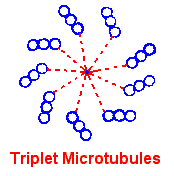 3
primary cellular energy molecules: AMP~ ADP~ ATP (ATP is primary energy source)
3
primary cellular energy molecules: AMP~ ADP~ ATP (ATP is primary energy source)3 groups of basic cells: Eubacteria~ Archaebacteria~ Eukaryotes
3 germinal layers: Endoderm~ Mesoderm~ Ectoderm
3 sequenced organism development: "Monoploblastic"~ Diploblastic~ Triploblastic
3 ionized forms of amino acids: Nonpolar~ Polar~ Electrically charged
3-lettered abbreviations used for amino acids
3 types of molecular bond: Covalent~ Ionic~ Polar covalent
3 isomerism types:
- Structural (Ethyl alcohol)~
- Geometric (Maleic acid)~
- Optical (L-Lactic acid
3 hydrocarbon chain types: Straight (Propane)~ Branched (Isobutane)~ Circular (Cyclopropane)
3 main fatty acid categories: Saturated~ Monounsaturated~ Polyunsaturated
*** Omega-3 family of Essential Fatty Acids is said to be needed for optimum health
3 basic chemical reaction substances: Acids~ Bases~ Salts
3 layers of Arteries, Capillaries, Veins: Connective tissue~ Muscle~ Endothelium
(Tunica intima~ Tunica media~ Tunica adventia)
3 dietary monosaccharides well absorbed: Glucose~ Galactose~ Fructose
3-patterned general formula for carbohydrates: Cx(H20)y
3 metabolized for energy needs: Carbohydrates~ Fats~ Proteins
Triglycerides are the main storage forms of fatty acids
3 flow pattern types of Pulmonary Circulation:
- Zone A (Alveolar pressure exceeds intravascular pressure)~
- Zone B (Alveolar pressure intermediate between arteriolar and venular pressures)~
- Zone C (Intravascular pressure exceeds alveolar pressure)
3 classes of Amines (ammonia compounds):
- Primary, NH2R ~
- Secondary, NHR2 ~
- Tertiary, NR3
3 classes of Neurons: Motor (Monopolar)~ Sensory (Bipolar)~ lnter (Multipolar)
3 main cellular components of Blood: Red blood cells~ White blood cells~ Platelets
3 blood plasma protein groups: Globulin~ Albumin~ Fibrinogen
3 white blood cell (leucocyte) groups: Granulocyte~ Lymphocyte~ Monocyte
3rd corpuscle: (alternate name for platelets)
*** Band 3 protein is complex molecule in red blood cell (erythrocyte) membranes
3 letters (and combinations thereof) used for blood typing: (A~ B~ 0)
3 main blood channels: Veins~ Arteries~ Capillaries
3 interferon types: (White blood cells)~ (Fibroblasts-connective tissue)~ (Lymphocytes)
3 gastrointestinal tract wall layers: Epithelium~ Lamina propria~ Muscularis mucosae
3 gastric mucosa regions: Cardiac glandular~ Oxynti glandular~ Pyloric glandular
3 parts of the small intestine: Duodenum~ Jejunum~ Ileum
3 types of (digestive tract) epithelial cell junctions: Tight~ Desmosome~ Gap
3 carbon-to-carbon bonds:
- Single (Ethene)
- Double(Ethylene)
- Triple (Acetylene)
3 genotypes: AA (homozygous dominant)~ aa (homozygous recessive)~ Aa (heterozygous)
*** Since the fertile life of the human egg cell lasts at most one day and that of the human sperm at most two days, there is a period of about three days during which copulation can result in conception (the day when the egg is fertile and the two preceding days).
*** Generally speaking, the egg traverses the fallopian tube in about 3 days; Sperm can travel at a rate of 3 inches per hour; A spermagonium gives rise to 3 active cells and 1 resting cell.
3 trimester divisions in pregnancy
3 bones of the pelvic girdle: Ilium~ Pubis~ Ischium
3 stages of labor: Dilation of the cervix~ Delivery of the baby~ Delivery of the placenta
3 days after birth is a baby's customary first check-up
3 months old is when most babies begin shedding tears.
3 stages to ovarian follicle development
3 layers to female uterus: Perimetrium ~ Myometrium ~ Endometrium
3 embryonic somites: Dermatomes ~ Myotomes ~ Sclerotomes
3 membranes surround embryo: Amnion~ Chorion~ Allantois
3 expansions of neural tube produce: Forebrain ~ Midbrain ~ Hindbrain
3 successive brain divisions: Hind/Midbrain ~ Limbic system ~ Cerebral cortex
3 brain and spinal cord layers: Pia Mater~ Dura Mater~ Arachnoid process
3 Spinal Cord white-matter columns:
- Dorsal Funiculus ~
- Lateral Funiculus ~
- Ventral Funiculus
3 pounds: common reference to the weight of the human brain
3 pints: common reference to the capacity of the human brain
3 stages of brain development: Reptilian ~ Mammalian ~ Neomammalian
3 lobes on each Cerebellum hemisphere: Blocculondodular ~ Anterior ~ Posterior
3 divisions of autonomic neurons: Sympathetic ~ Parasympathetic ~ Enteric
3 major classes of endogenous opioid peptides: Enkephalins~ Endorphins~ Dynorphin
3 basic epithelial cell shapes: Squamous ~ Cuboidal ~ Columnar
3 heart layers: Endocardium ~ Myocardium ~ Pericardium
3 forms of stroke: Embolic ~ Hemorrhagic ~ Thrombotic
3 Catabolism stages: Glycolysis ~ Conversion of Pyruvic acid into acetyl CoA ~ Krebs Cycle
3 important nitrogenous waste compounds: Ammonia~ Urea~ Uric acid
3 bands of the Colon: Teniae mesocolica~ Teniae libera~ Teniae omentalis
3 histochemical types of skeletal muscle fibers: Type I~ Type IIB~ Type IIA
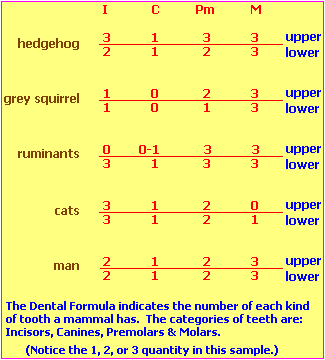 3 types of taste bud groups on papillae: Circumvallate~ Foliate~ Fungiform
3 types of taste bud groups on papillae: Circumvallate~ Foliate~ Fungiform3 molars, 2 bi-cuspids,1 cuspid on both sides and both lower/upper jaws
3 tooth parts: Crown~ Neck~ Root
3 bud parts: Enamel organ~ Dental papilla~ Dental Sac
3 surface divisions of tooth: Lingual - Facial - Proximal
***Triangular shape to canine tooth roots in cross section
3 main types of malocclusions: Overbite ~ Underbite ~ Crowding
3 (1st, 2nd, 3rd) lower & upper jaw molars
3rd molar is singled out to be called the wisdom tooth.
3 main stages to periodontal (Gum) disease: Gingivitis ~ Periodontitis ~ Loss of bone
3 main kinds of periodontal diseases: Gingivitis ~ Periodontitis ~ Vincent's Infection
3 most common artificial teeth types: Bridges ~ Partial dentures ~ Full dentures
3 muscle types: Striated ~ Cardiac ~ Smooth
3 muscle divisions: Head ~ Belly ~ Tail
3 gluteus muscles: Maximus ~ Medius ~ Minimus
3 muscle fiber arrangements: Unipennate ~ Bipennate ~ Multipennate
3 masseter muscle parts: Superficial ~ Intermediate ~ Deep
3 muscle heads: Biceps ~ Triceps ~ Quadriceps ("Quadricep" refers to Musculus Triceps Surae, the Plantaris is counted separately) {another 3:1 ratio}
3 muscle (contrasts) definitions: Superior/Inferior~ Major/Minor~ Posterior/Anterior
3 lateral vertebral muscles: Scalenus anterior~ Scalenus medius~ Scalenus posterior
3 peroneal/fibular muscles: Peroneus brevis~ Peroneus longus~ Peroneus tertius
3 general muscle attachment types: Superficial fascia ~ Deep fascia ~ Subserous facia
3 eyelid muscles: Levator palpebrae superioris ~ Obicularis oculi ~ Corrugator supercili
3 parts of the eye: Iris~ Cornea~ Pupil
3 orbicular muscle portions: Pars orbitlis ~ Pars palpebralis ~ Pars lacrimalis
3 color blindness types: Protanopia ~ Deuteranopia ~ Tritanopia
3 eyeball tissue layers: Sclera/Cornea ~ Uveal Tract ~ Retina
3 preotic myotomes of the eyes: Oculomotor ~ Trochlear ~ Abducens
3 eyeglass types: Monofocals ~ Bifocals ~ Trifocals
3 extrinsic straight muscles (eyes): Lateralis rectus - Medialis rectus - Superior rectus
3 parts of the eye: Iris - Cornea - Pupil
3 color blindness types: Protanopia - Deuteranopia - Tritanopia
3 eyeball tissue layers: Sclera/Cornea - Uveal Tract - Retina
3 "convenient" pelvic fascia divisions: Piriformis ~ Obturator ~ Superior
3 columns (with 3 subdivisions) of the erector spinne (sacrospinalis) muscle mass:
(Lateral column): Ilicostalis lumborum~ Iliocostalis thoracis~ Ilicostalis cervicis;
(Intermediate column): Longissimus thoracis~ Longissimus cervicics~ Longissimus capitis;
(Medial column): Spinalis thoracis~ Spinalis cervicis~ Spinalis caphis
3 divisions to the transversospinalis muscle group:
- Semispinalis thoracis~ Semispinalis Cervicis~ Semispinalis capitis
- Multifidus muscles
- Rotatores thoracis~ Rotatores cervicis~ Rotatores lumborum
*** The human knee performs one kind of movement (flexion/extension)~ The ankle performs two kinds of movement (flexion/extension & inversion/eversion)~ The ball-and-socket joints, such as the hip, allow three degrees of freedom.
3 between-finger triangular spaces for each hand
3 stomach wall fiber layers: Longitudinal~ Circular~ Oblique
3 layers of dead cells make up a hair shaft: Medulla~ Cortex~ Cuticle
Triphasic sexual response nature:
- Female): Desire~ Lubrication & Swelling~ Orgasm
- (Male): Desire~ Erection~ Ejaculation
3 stages of sexual behavior by sex "experts": Foreplay~ Loveplay~ Afterplay
3 immature "standards" of sexual behavior: Length of penis~ Frequency of sex~ Number of orgasms
3-part phrase of insecure, barbaric, egocentric men: Wam - Bam - Thank you ma'am
3-part motto attributed to British Special Air Services (SAS) Regiment:
Get in- Get it done- Get out
3 functions of human skeleton: Support~ Protects organs~ Movement (with muscles)
3 letters (and combinations thereof) used for blood typing: A - B - 0
3 main blood channels: Veins - Arteries - Capillaries
3 days after birth is a baby's customary first check-up
3 months old is when most babies begin shedding tears
3 amino acids associated with organisms having a thyroid gland: Monoiodotyrosine - Diiodotyrosine - Triiodothyronine
3 pounds: common reference to the weight of the human brain (repeat from above)
3 stages of brain development: Reptilian - Mammalian - Neomammalian
3 skin layers: Epidermis - Dermis - Subcutaneous Tissue
3 burn degrees: 1st degree burn - 2nd degree burn - 3rd degree burn
3 trimester divisions in pregnancy
3 layers to female uterus: Perimetrium - Myometrium - Endometrium
3 basic fingerprint types: Loop - Whorl - Arch
3 basic feather types: Contour - Down - Filoplumes
3 parts of the small intestine: Duodenum - Jejunum - Ileum
3 bones of the pelvic girdle: Ilium - Pubis - Ischium
3 animal reproduction types: Oviparous - Viviparous - Ovoviviparous
3 animal feeding types: Herbivore - Carnivore - Omnivore
3 main body parts to Arthropods: Head - Thorax - Abdomen
3 segments of insect thorax: Prothorax - Mesothorox - Metathorax
3 eyelids in the Tuatara, Crocodilians and most birds
3 groups of Ocean life: Plankton - Nekton - Benthos
3 muscles of the human nose: Procerus - Nasalis - Depressor septi
3 elevations (Concha) in the olfactory portion of the nose
3 bones in the nose: Inferior Meatus - Middle Meatus - Superior Turbinate
3 stages of bone development: Membranes - Cartilaginous - Osseous
3 types of cartilage: Fibro - Elastic - Hyaline
3 possible bone formation sites: Intramembranous - Endochondral - Heterotopic
3 bone layers: Concentric - Circumferential - Interstial
3 bone cell types: Osteoblasts - Osteocytes - Osteoclasts
3 joint categories: Fibrous - Cartiloginous - Synovial (Immovable - Partly movable - Freely movable)
3 stage development for some insects: Larva - Pupa - Imago
3rd and usually largest vein of an insect's wing is called the Radius
3 plant families of trees with the most significant (food bearing) attractive flowers: Magnoliaceae - Rosoceae - Leguminosae
3 "feeding" hairs on Venus fly trap lobes trigger closing
3 flagella on certain protozoans (Tritrichomonas)
3 sets of chromosomes in humans (presently) produces mutations such as Down's syndrome
3 sets of chromosomes in plants produces humanity's single most important food sources such as maize, wheat, barley, oats, rice and other cereals (Monocotyledonea plants)
3 photoperiodic plant types: Long day - Day-neutral - Short day
Note: during the process of placing the information from the poster onto a webpage, I added a few examples in an attempt to place other similar (or correlational) ideas in concert with the printed (on the poster) examples. The origin of the moon theories example can also be found on the 4th column, while other included examples are to be found on other pages at the threesology.org site. I left the additional examples in, attached with this comment. It should also be noted that the first online presentation was made possible by someone in Poland, whose name I can not recall at the present moment. He placed the entire poster online and I pursued an internet presence afterwards. So if he comes across this, I have kept my word by not publicly identifying him. Nonetheless, I owe him a lasting debt of gratitued.)
Maintenance update posted: Friday, 16-June-2017... 11:31 AM
Most Recent re-Posting: Saturday, 2nd October 2018... 2:01 PM
Update: Saturday, 21st June, 2025... 2:21 PM
Herb O. Buckland
herbobuckland@hotmail.com